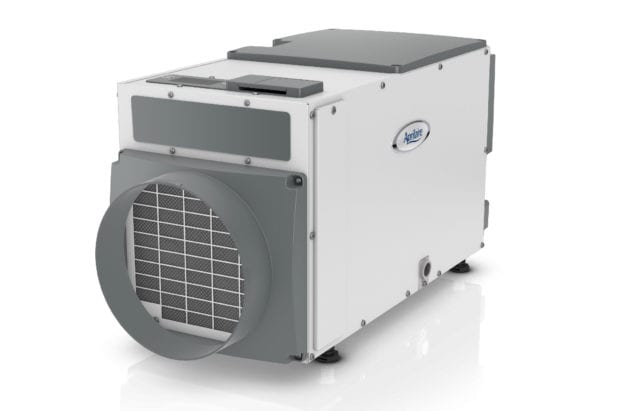Dehumidifiers 101: What do they do and why do I need one?
Humidity Problem
Living in the midwest means we’re all familiar with humidity, but many homeowners aren’t familiar with how to control humidity through dehumidifiers. Few things are worse than stepping outside on a July day and feeling the hot wall of humidity hit you. While the summer especially comes to mind, the outside air is humid all year round, albeit in various degrees. That humidity can similarly enter your home and cause issues.
Aside from the environment, there are a few things you may do inside your house that can cause humidity. The first is cooking on the stove without proper ventilation. The steam from consistent cooking can cause a change in the humidity of your home. Additionally, steam from hot showers (also not properly ventilated) can add even more humidity. Because of one or multiple of these reasons, you may start to notice condensation on your walls, flat surfaces, and especially your windows. This is indication that the humidity in your home it too high.
Other signs that may indicate you have a humidity problem:
- Musty smell or feeling, especially in older basements
- Rotted wood
- Mold/mildew spots, especially in bathrooms
- Wood floors buckling
- Water stains on walls or ceiling
How Dehumidifiers Work
If you notice these consistent problems, you’ll want to install a dehumidifier in your home. Within a week of installing, you’ll start to notice a difference and have better control over the humidity in your home.
Dehumidifiers suck the moisture out of the air and condense it into liquid that goes into a collection tank or down a drainpipe. They then push the humid-free air back into the home, stabilizing the humidity. The most important thing is that they will take care of the humidity problem you may be experiencing, preventing any damage or health problems caused by high humidity.
In terms of upkeep, you’ll simply need to empty the collection tank if the dehumidifier is not hooked up to a drainpipe and replace a filter annually. It can be plugged into a wall and is a quick install. It is important to note that if you are familiar with humidifiers, you will notice that dehumidifiers are much bigger. Humidifiers normally fit on the side of your system due to their smaller size. A dehumidifier will need to be placed on the floor (or propped up slightly from the floor) next to your system. Ensure that you understand the size of the dehumidifier you are considering and have enough room for it.
Benefits of Dehumidifiers
- Better health: when you rid your home of excess humidity, you also prevent mold and mildew from forming. This will reduce mold health hazards such as allergies and respiratory problems.
- Energy efficiency: increased humidity normally makes a space warmer, so your system has to work harder to keep it cool. When you remove the humidity from the air, your system will use less energy and run smoother.
- Comfort: reducing the humidity in your home will also increase your personal comfort. Most people tend to think about the temperature in the home as the most important factor for comfort (and it is important!). But humidity can have as much of an effect on how you feel in your home as temperature. As noted above, humidity can tend to make a space feel warmer, so even if your thermostat says one thing, your experience may be slightly different. When you control both the temperature and the humidity in your home, you can find the best comfort possible!
Interested in controlling your home’s humidity? Check out our comprehensive Indoor Air Quality Guide or take a look at our Aprilaire Dehumidifiers. And as always, feel free to give us a call (317-203-8149) or reach out online.
Need Free HVAC Advice? Ask The Experts!